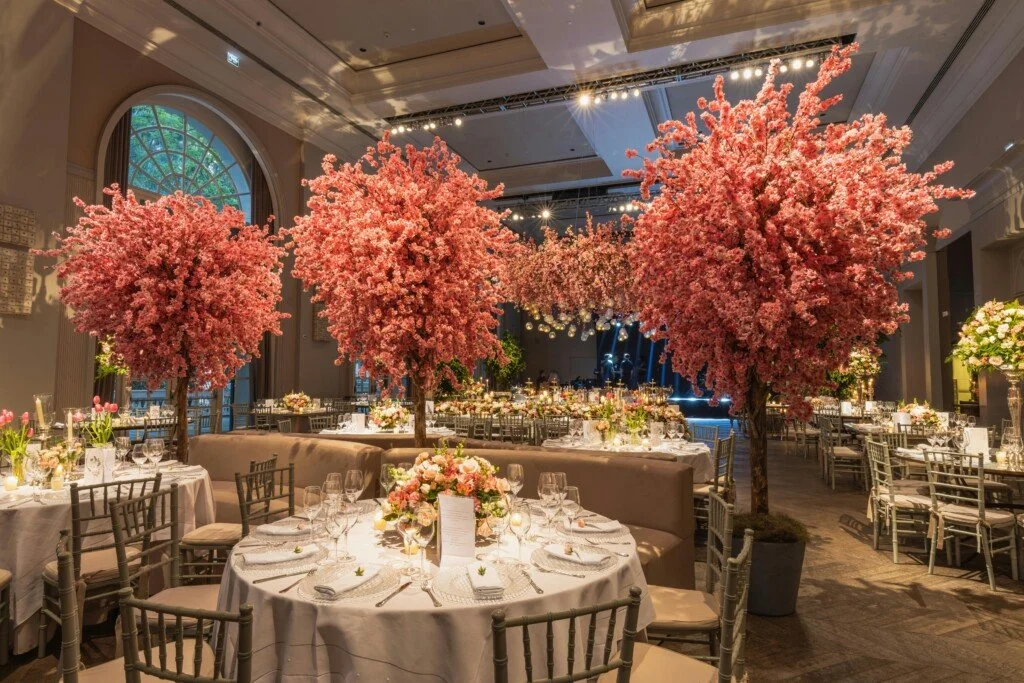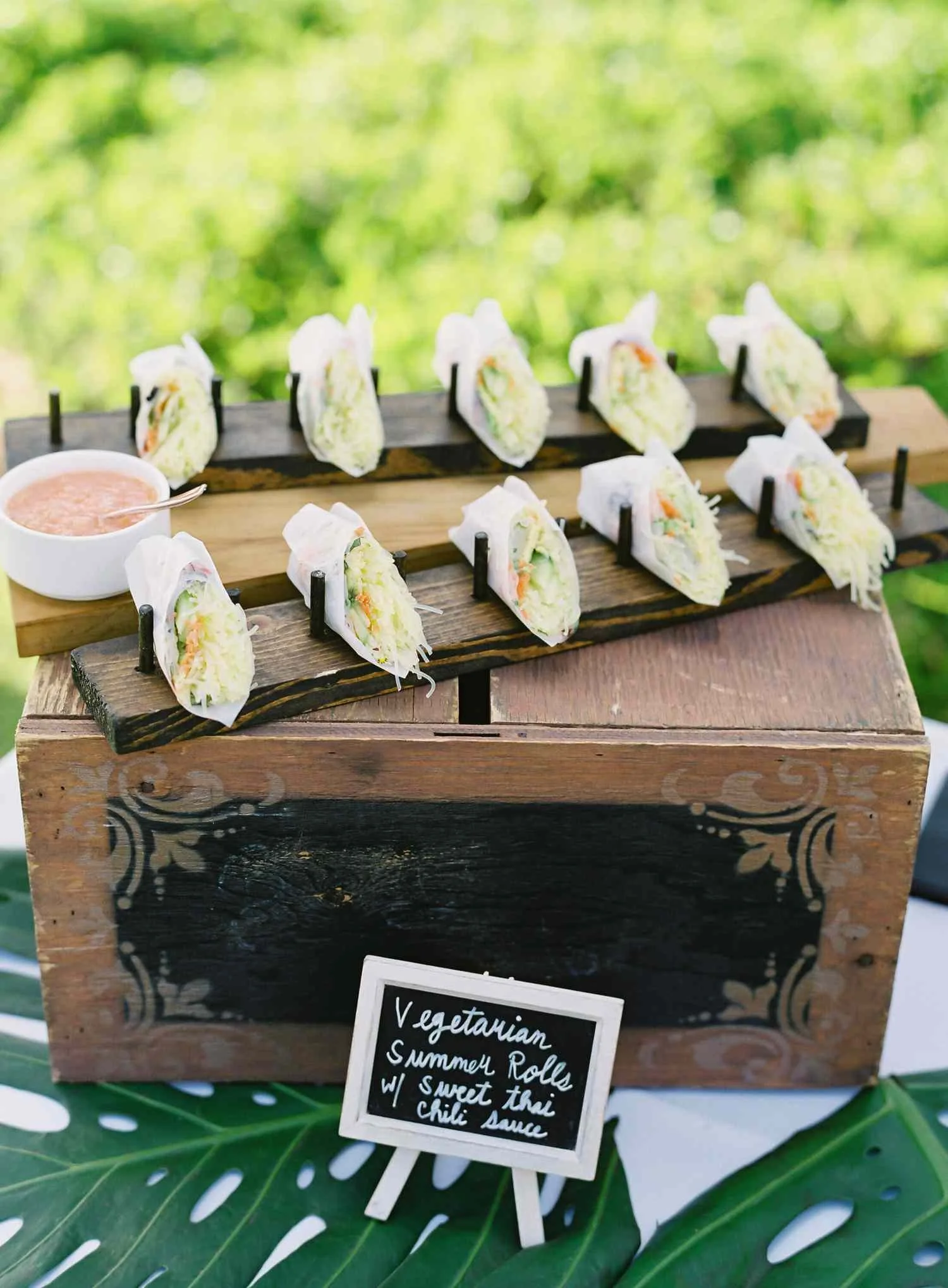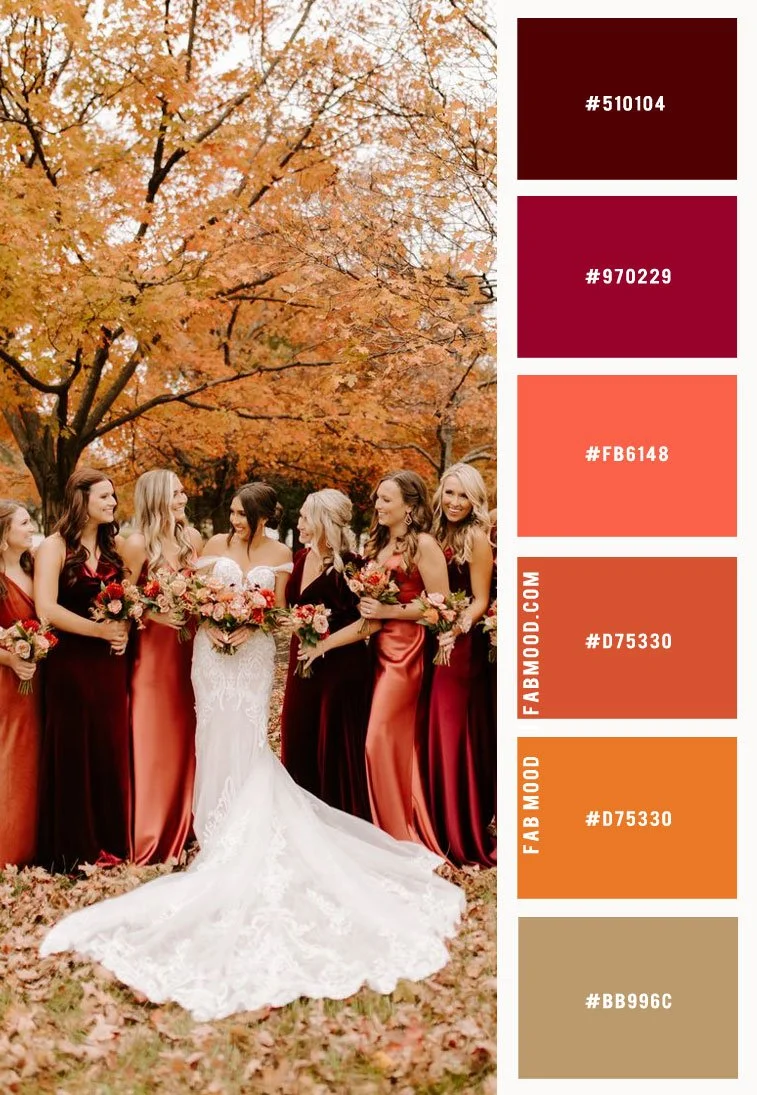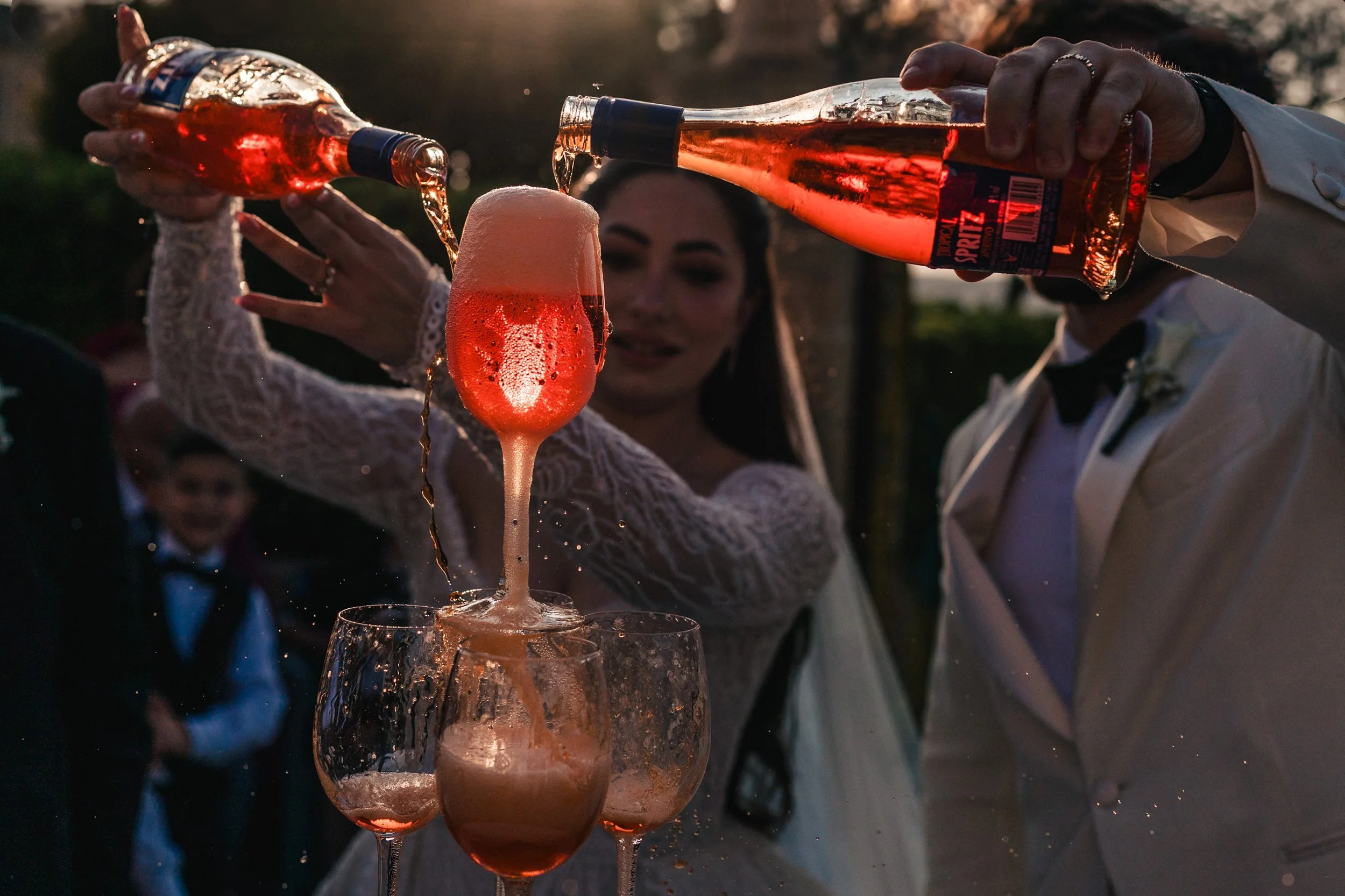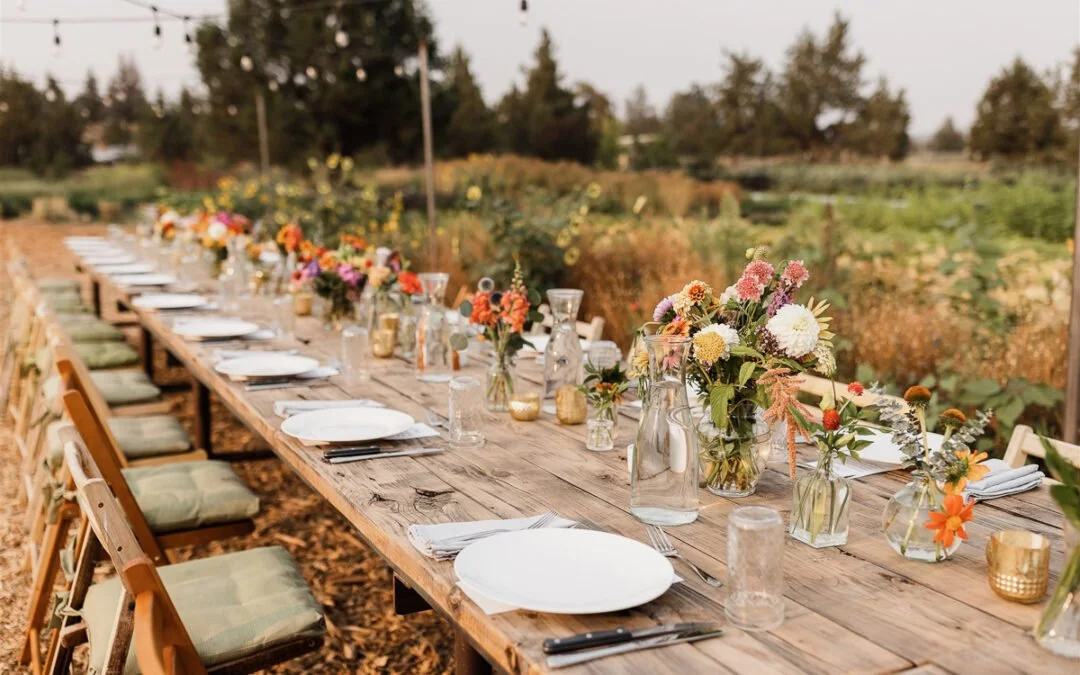If you’re planning your wedding in 2026 or 2027, you’re entering a world where creativity, sustainability, and personalised storytelling shape every moment. The past two years have brought unforgettable celebrations – from Jeff Bezos wedding in Venice to Ed Westwick and Amy Jackson’s romantic Amalfi Coast celebration – setting the stage for what’s next in the wedding world.
Weddings are no longer just about a beautiful venue and a delicious cake. Couples today are transforming their day into an immersive experience that reflects who they are, what they value, and how they want guests to feel. Whether you’re dreaming of a luxury destination wedding in Europe or a meaningful hometown ceremony, understanding upcoming trends will help you create a wedding that feels fresh, relevant, and deeply yours.
In this extensive guide, we explore global wedding trends alongside Europe-specific inspirations, breaking down what’s hot in fashion, decor, venues, food, entertainment, technology, and sustainability for 2026 and beyond. Each trend is analysed for its luxury potential while offering ideas to adapt it beautifully for mid-range budgets.
Personalized, Immersive Celebrations: Couples are increasingly crafting weddings as fully immersive experiences that reflect their story and values. This means designing every detail – from the entrance to the ceremony décor – to feel “deeply curated” and meaningful. For example, many will make a grand entrance: walking down a petal-lined aisle under hanging floral arches or unique structures, creating a cinematic moment. Similarly, welcome events and photo areas are themed to tell a story – think a bohemian lounge or a vintage vignette for guest photos In practice, even midrange couples can personalize by choosing one or two signature elements – a custom welcome sign or a well-curated photo corner – that tie into an overall theme (e.g. travel-inspired, retro, or eco-chic).
Hyper-Personalized Details: Gone are generic favors and décor. Modern couples give guests “meaningful” keepsakes (artisan treats, seeds, charitable donations) that echo the couple’s heritage or values Wedding stationery, too, is going beyond flat cards. Expect bespoke paper goods and even object-based invitations (engraved wood, glass tokens). Monograms and custom motifs will be stamped everywhere: on invites, menus, cocktails and signage, creating a branded, story-rich experience. (Branded weddings – with color-coordinated themes for each event – were noted as a 2025 trend, and this is just accelerating.) To adapt this on a budget, couples can design or commission a simple logo or color scheme early on, and echo it through DIY signage or color-coded ribbons.
Eco-Friendly Practices: Sustainability is no longer niche but mainstream. Couples are choosing eco-conscious venues (like farms or gardens powered by renewables) and vendors (local florists, farm-to-table caterers) to cut waste and carbon. Popular tactics include digital invitations, vintage or rented attire, reusable floral installations, and plant-based menus. Favors have gone green (seed packets instead of plastic trinkets) and décor often uses potted plants, dried blooms or upcycled furniture. Notably, farm-to-table and seasonal menus are emphasized – vegetable and fruit centerpieces (mushroom bouquets, heirloom tomatoes) double as décor and dinner ingredients. In practice, even a midrange wedding can embrace this by selecting a seasonal menu, repurposing ceremony flowers at the reception, or choosing decorations (like LED lights and cloth drapes) that can be rented and reused.
Bold, Layered Color Palettes: The era of all-neutral is fading. 2026 welcomes rich, energizing color schemes. Warm jewel tones – think deep emerald, sapphire, burgundy, mustard or the “Verona Sunset” blend of peachy orange/terra cotta – are on-trend for both decor and attire. Couples mix these with softer neutrals (linen, sage, lavender) for depth. For example, Olivia Culpo’s wedding drew on a striking blue-and-yellow palette that honored her Italian and New England roots. Brides may wear gowns with subtle color (blush, lavender or metallic accents) or even entirely non-white dresses; grooms may swap black for burgundy or forest green tuxedos These trends are accessible to all budgets: small pops of bold color (table linens, bouquets, bridesmaid dresses in diverse jewel tones) can make a big impact without a luxury price tag.
Dramatic Draping & Texture: Fabric is a decor hero in 2026–2027. Think sweeping drapes from ceilings, billowy tent tents, and textured backdrops that add instant drama. Planners predict “dramatic draping” will soar as an elegant alternative to heavy florals. This can transform simple venues into couture-like settings – for example, a gallery space becomes a “living tableau” with curving fabric walls and artful lighting. Layered textures matter, too: sculptural fabrics, 3D paper installations or textured walls (stucco-patterned cakes, grass-cloth table runners) are “in”. On a budget, inexpensive sheers or tulle can be draped creatively (e.g. over a flat ceiling) and paired with uplighting to mimic a marquee feel.
Statement Fashion for Every Role: From couture to casual, wedding attire is becoming more expressive. Brides are breaking away from “traditional archetypes”: designers previewed 2026 collections with features like botanical embroidery, 3D florals, pearl embellishments, and non-white gowns (blush, sage, metallic). Practicality is trending: detachable skirts and sleeves let brides “change” looks mid-day. Cakes and accessories follow suit – for example, veils may incorporate pearls, and cakes often use draped fondant and fabric bows for a couture effect. Grooms are also dressing up: classic tuxedos in black remain, but many opt for velvet jackets, jewel-toned suits or even capes. Crucially, couples guide guests’ style too: it’s now common to share an “aesthetic dress code” (via mood boards) so everyone’s outfit fits the wedding’s vibe. Even modest budgets can play: rent a special accent piece, or swap a tradition (e.g. a rented tuxedo) with a custom detail like a monogrammed lining.
Glamorous Entertainment & Social Moments: Weddings will lean into live entertainment and social sharing as events rather than just parties. Music is a curated journey: live strings or jazz may bookend ceremonies, and specially chosen first-dance songs or entrance anthems heighten emotion. Photo/video is elevated too: beyond the official photographer, many hire a “content creator” for real-time Reels and candid footage. Nostalgic film photography is also resurging for a romantic feel. Experience-driven elements like champagne walls, cocktail stations (e.g. Lillet spritz with herbs) and late-night snack bars (bagels at midnight!) ensure guests are entertained from first toast to last dance. These trends can fit any scale: a midrange wedding might trade a fancy band for a skilled DJ who learns the couple’s playlist, and still set up an Instagram-worthy drink station or interactive food cart to keep guests buzzing.
Unique Venues & Travel Experiences: Beyond the usual banquet hall, 2026-27 weddings embrace nontraditional locales worldwide. Luxury couples will take the lead (e.g. castle elopements, vineyard weekends, even “train weddings” through scenic Europe), but midrange couples are also drawn to personal or iconic places. Vogue notes a resurgence of “hometown weddings” – celebrating on a meaningful family property or local landmark. Destination weddings remain strong, especially in European hotspots (Italy, Spain, Greece) that combine stunning views with heritage and hospitality. Many of these venues naturally support other trends (sustainability and village charm). In Europe in particular, expect rustic village settings or historic châteaux with string lights and long wooden tables (a “village wedding” vibe), as well as luxury retreats (skies amenity, local traditions). Key insight: wherever it is, the venue will be part of the narrative – couples may choose, say, a mountain glen to signal their love of nature, or an art gallery for their creative flair.
Modern Decor & Guest Experiences: Couples continue to prioritize guest experience. Photo booths are “reimagined” as chic installations (floral walls, custom backdrops), and immersive corners (live painting, personalized nooks) invite engagement. The Knot highlights trends like “tailored welcomes” – themed pre-wedding events (e.g. a poolside lounge in Napa or a rehearsal pizza party) that set the tone. Bars and lounges might be branded (signature cocktails with custom stirrers). Overall, every decorative element doubles as an experience: food stations as interactive entertainment (DIY ice cream or build-your-own-cocktail bars), draped lounges for relaxation, or surprise delights (late-night fast-food deliveries!). Mid-level weddings can mimic this by focusing on one or two "moments": for instance, turning the cake cutting into a mini-event with sparklers and a photogenic backdrop, or hiring a caricaturist as a fun keepsake station.
Food & Drink Innovation: F&B is more creative and guest-centric than ever. Extravagant displays (champagne towers, seafood or croquembouche towers) add spectacle, but so do simple twists: multi-course tasting menus, family-style sharing platters, or “cake meadows” (layers of naked cake garnished with fresh blooms). Couples lean into local cuisine – Spanish lunches with paella, Italian dinners under the stars – reflecting destination or cultural roots. Bars follow suit with ready-to-drink and mocktail options: having signature cocktails on demand (via tokens or stations) avoids lines, and curated mocktail bars (seasonal spritzers, herbal blends) ensure non-drinkers feel catered to. The trend is Instagrammable overabundance and high customization: edible florals in drinks, eye-catching garnishes, and even bespoke bar carts. To replicate on any budget, couples can emphasize presentation (colorful garnishes, elegant glassware), serve a limited signature drink list, and let family-style service (long “winding” tables) double as décor.
European Wedding Trends 2026–2027
Mediterranean Inspiration: European weddings will prominently feature sunny, seaside styles. You maybe thinking of Amalfi-Coast blue-and-yellow gardens (like Olivia Culpo’s Rhode Island welcome dinner) or warm Italian “Verona Sunset” hues (peach, terracotta, amber) in florals and stationery - but you should also consider other locations in southern Italy or Malta. Olive branches, lemon trees and bougainvillea are popular, and menus focus on local fare (fresh seafood, regional wines). Premium and luxury couples can apply this by choosing any Mediterranean palette (or even a local analog, like Tuscan yellow and olive green) and using locally-sourced blooms or olive-oil favors to evoke that relaxed elegance.
Classic Chic Venues – Castles, Villages, Trains: In Europe, country estates, châteaux, vineyards and converted train-cars are hot. Vogue and Atawa highlight the “chic village wedding” and even luxury train weddings through historic regions. For instance, exchanging vows on a heritage train or an English manor is a growing trend. Rustic British countryside weddings with checkered linens and festoon lights are pairing folk charm with polish. This contrasts with ultra-modern “gallery” weddings (black-and-white themes with gold accents) in cosmopolitan cities. Couples on a budget can still harness local flavor: a municipal garden or family vineyard, festively decorated with heirloom props, can feel as grand as a castle.
European Fashion Flair: European bridal fashion will balance old-world romance with modern creativity. We saw this in VIP weddings like Amy Jackson’s Amalfi nuptials: a timeless strapless Alberta Ferretti gown with cascading layers, plus a second avant-garde look with 3D appliqués and polka-dot tights. This mix of classic silhouettes and bold details (lace-edged veils, embroidered corsets) is emblematic of European style Grooms may add Continental flair too – velvet dinner jackets or even tartan kilts. Bridal accessories often nod to heritage: Amy Jackson wrapped a Celtic heirloom necklace around her bouquet. Budget-conscious couples can adapt by, say, adding a vintage brooch to the bouquet or renting a nontraditional gown (jumpsuits and separates are also catching on in Spain).
Green, Local & Cultural: European trends put sustainability and local culture front and center. Spanish planners note that 2025–26 couples in Europe favor organic farming venues and seasonally inspired designs. Flowers are often local or dried (Mediterranean olive branches, lavender) rather than out-of-season imports. Cultural heritage appears in décor: Greek couples might include bouzouki music or Byzantine iconography; Italians might integrate family religious customs. Destination celebrations in Europe also incorporate local rituals – for example, Basque weddings feature a txalaparta drum procession. Even regionally-available food and wine become part of the trend: Tuscan weddings serve Chianti and pecorino, Bavarian weddings have pretzel snacks, etc. Smaller budgets can localize by highlighting home traditions – use family heirlooms as table décor or play folk music at the reception.
European Color & Pattern: While global trends favor jewel tones, European couples may also embrace heritage patterns. The Art Deco revival will be strong: black/gold palettes, geometric motifs and Gatsby-style flair turn up at European receptions. Vintage lace, velvet and mirror accents echo old-world elegance. Alternatively, Scandinavian weddings might prefer a muted natural palette (linen, pine green, mustard), while Eastern European celebrations might reintroduce bold reds and rich embroideries (the Knot even lists “Unexpected Reds” as a current trend). The key is that color choices often reflect location – a Venetian wedding may feel decidedly opulent (as in Bezos’s Venetian nuptials), whereas a rustic Spanish finca might use terracotta and white.
Intimate & Localized Ceremonies: Post-pandemic, even in Europe there’s a swing between big destination gatherings and intimate hometown ceremonies. As Vogue noted, 2025 saw more couples bringing celebrations “home”. In Europe, this can mean marrying in a family church or local vineyard, then hosting a regional feast. But VIP events still inspire grandeur: multi-day Italian vineyard weddings or Greek island castle celebrations – yet often scaled down (100–150 guests). The focus is on authenticity: French couples are foregoing large buffet traditions for plated farm-to-table meals, and British couples are adding rehearsal “pizzas and prosecco” nights (a 2027 UK trend). Couples with modest budgets can emulate this by, for instance, having a small church ceremony followed by a well-appointed family-style dinner under market lights, balancing local charm with thoughtful planning.
Euro-Specific Decor Details: European trendsetters emphasize handcrafted and historic touches. PerfectVenue notes using décor “loaded with history” – e.g. vintage tableware, architecture-inspired floral arches, and antiques from local markets. This echoes Atawa’s “scenographic” weddings, where every space is a curated tableau. Common elements include olive-wood tables, artisanal ceramics, and even chalkboard menus in multiple languages for cosmopolitan guests. Couples might also incorporate local craft (murano glass centerpieces in Italy, lace accents in France, or Delftware in the Netherlands). Many European venues (old estates, monasteries, vineyards) provide built-in character that couples enhance with personal touches like family photos in vintage frames. Even midrange budgets can tap this by shopping local flea markets for decorations or encouraging guests to wear regional costumes/colors.
Each of these trends – from personalized experiences and sustainability to bold colors, drapery, couture attire, and thematic venues – has roots in recent high-profile weddings and 2024–25 showcases. In both luxury and midrange weddings, the emphasis is on authenticity and creativity. By blending these trends thoughtfully (for instance, adding one upscale element like a designer gown or artisan cake to an otherwise budget-friendly celebration), couples worldwide can create 2026–2027 weddings that feel both on-trend and uniquely their own.



